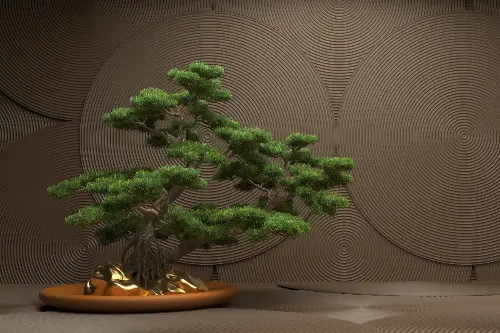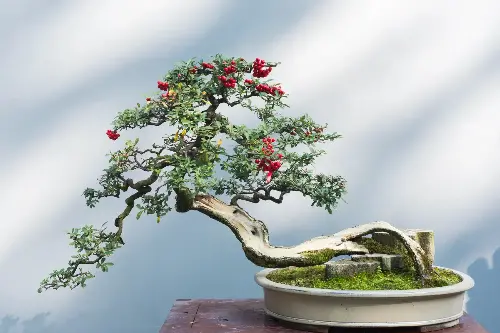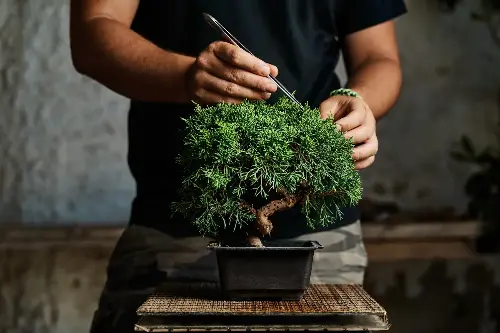The delicate whispers of nature quietly resonate through the art of bonsai, an ancient practice that embodies the harmony between gardeners and the miniature world they cultivate. Bonsai, meaning “planted in a container” in Japanese, captures the majestic beauty of nature on a diminutive scale, inviting onlookers into a space where each tiny tree tells its own story, centuries in the making.

Tracing its origins back to over a thousand years ago in China, where it was known as penjing, bonsai was later refined and transformed by Japanese enthusiasts into the art form recognised today. These living sculptures are not merely plants; they are a testament to patience, creativity, and the passage of time, as a bonsai's true character only emerges with years, often decades, of careful nurturing.
Interestingly, bonsai trees are not genetically dwarfed plants but are kept small through precise techniques that shape their growth, such as pruning, wiring, and repotting. Each species used for bonsai brings its own unique qualities and challenges, from the resolute pine to the delicate flowering cherry tree, each contributing differently to the canvas of bonsai artistry.
A well-crafted bonsai evokes the essence of the tree from which it originates. Artists aim to recreate various natural scenarios, such as a windswept tree on a rugged mountainside or a venerable tree in a serene meadow. The pot itself is also part of the composition, selected with a discerning eye to complement and enhance the living artwork it supports.

The aesthetic principles that govern bonsai design are grounded in the concept of "wabi-sabi," an appreciation of the beauty in imperfection and transience. Balance does not necessarily mean symmetry; in fact, asymmetry is a cornerstone of bonsai design, simulating how trees may appear in their natural environments. Another fundamental design concept is "shin-zen-bi," which stands for truth, goodness, and beauty, principles that bonsai artists strive to express through their work.
Bonsai trees demand more than just artistic sensibility—they require a substantial knowledge of horticulture. Ensuring the health of these trees involves a deep understanding of watering, fertilisation, and the prevention of pests and diseases. The way bonsai roots are maintained, trimmed, and repotted plays a crucial role in the tree's health and is a meticulous process that is intrinsic to bonsai success.
Styling a bonsai can take many forms, with common styles including the formal upright, informal upright, slanting, cascade, semi-cascade, and the literati. Each of these styles is influenced by the natural disposition of the tree and the vision of the artist, working in tandem with the tree's response to shaping and training.

Collecting bonsai has become a revered hobby worldwide, with enthusiasts gathering in clubs, societies, and on global online platforms to share their passion and knowledge. The global markets now cater to this growing interest, providing everything from starter kits for novices to rare specimens for serious collectors.
Bonsai exhibitions and competitions are a focal point for the community, where seasoned masters and newcomers alike showcase their miniature masterpieces. These events highlight the beauty of bonsai, revealing the rich tapestry of styles and species, and serve as a space for learning and exchange among aficionados of the art.
Moreover, for those inclined to delve into the spiritual and meditative aspects of bonsai, the practice offers more than just aesthetic pleasure—it can also be a form of moving meditation, connecting the individual to the present moment and the living, breathing organism under their care.

It's important to note that the art of bonsai is not restricted to the boundaries of traditional Japanese aesthetics. In different regions of the world, bonsai artists fuse local cultural elements with classic techniques to create unique variations that celebrate both the ancient and the contemporary.
In embracing the art of bonsai, individuals embark on a journey that transcends horticulture. They become part of a narrative that is ever-evolving yet rooted in the timeless principles of nature and beauty. It's a miniature wonder that offers a profound lesson: through careful attention and nurturing, one can cultivate not just trees but also growth and wisdom within.
